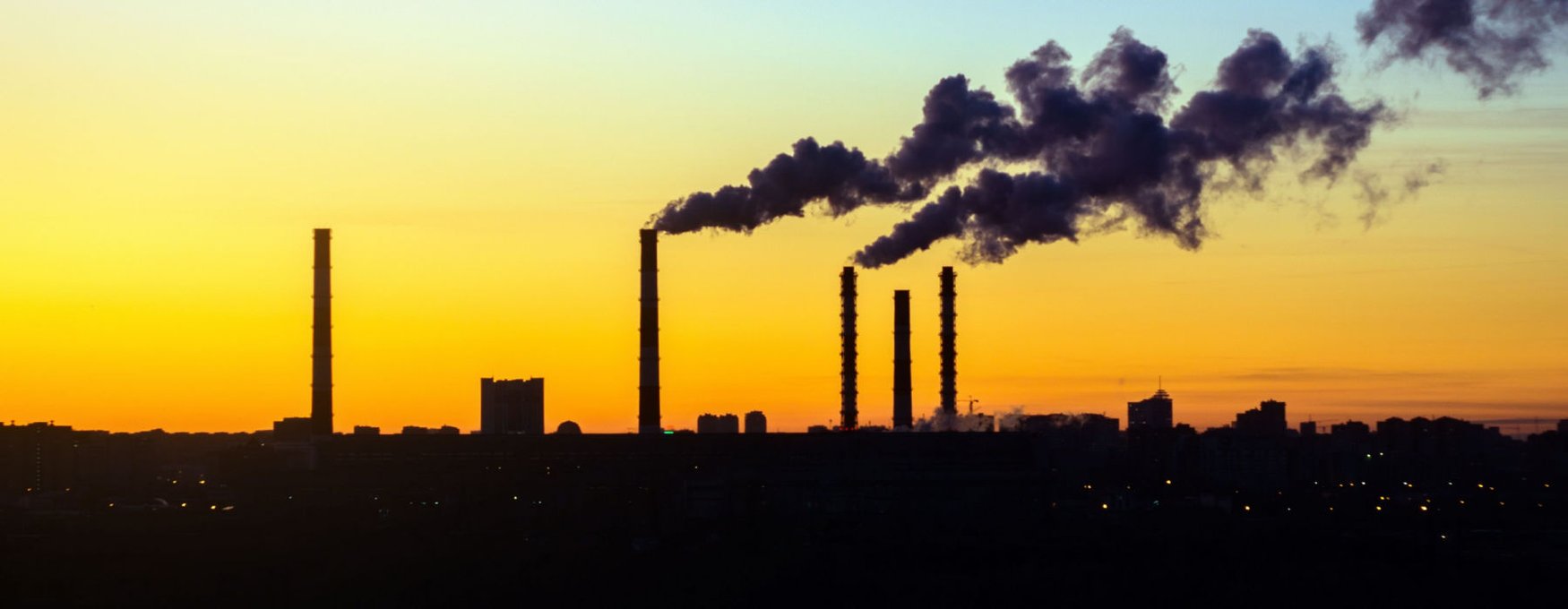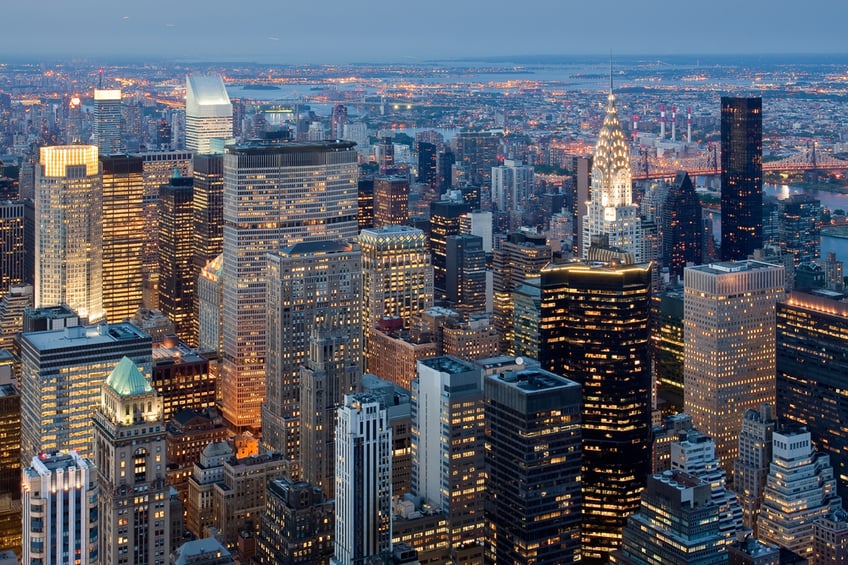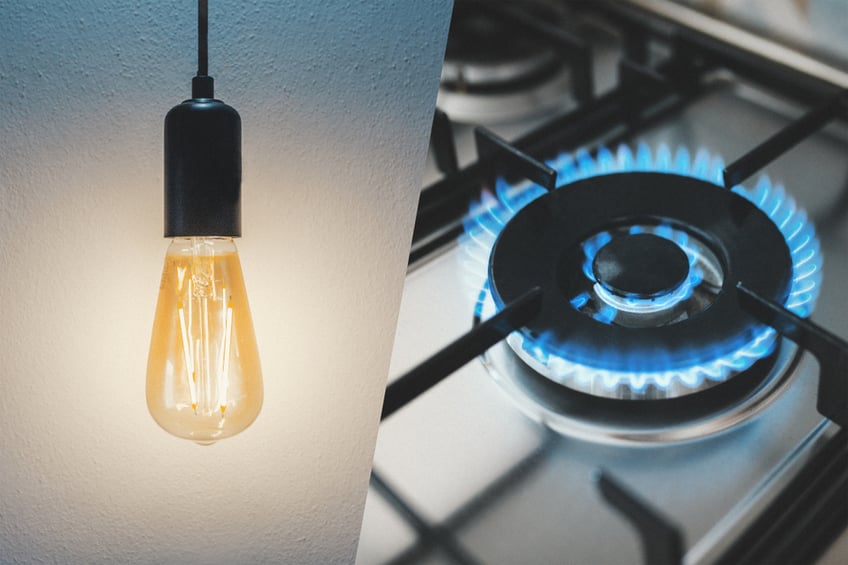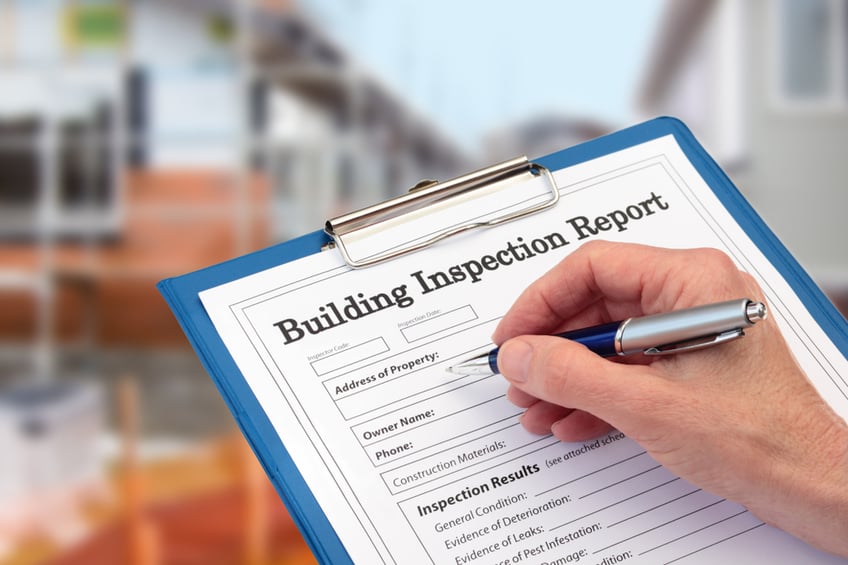New Local Law 97(LL97) Rules for NYC Building Owners

The NYC Department of Buildings (DOB) recently published updated rules for Local Law 97 of 2019 (also known as the Building Emissions Law). The 26-page document provides instructions for compliance, while updating and expanding many of the original requirements. LL97/2019 takes effect in 2024, and building owners must submit their first emissions reports in 2025.
Do you own buildings larger than 25,000 square feet in NYC? Make sure you meet Local Law 97 before penalties take effect.
The new LL97 rules provide a more detailed classification of the buildings covered by the law, using 60 categories instead of the original 10. Just like in the first version of LL97, each building type gets its own emissions limit per square foot. The list emissions factors for different energy sources was also expanded: the original text covers five energy sources used by buildings, while the updated rules cover 23 sources.
Building emissions limits have now been published for more periods: 2024-2029, 2030-2034, 2035-2039, and 2040-2049. The original LL97/2019 text only covered the first two periods.
LL97 Building Emission Limits: Updated List of Property Types

The Building Emissions Law is now using 60 property types from the ENERGY STAR Portfolio Manager, the tool being used to benchmark energy usage under Local Law 84. The original LL97 text classified properties into 10 broad categories, and this could have caused confusion among building owners. Now that the list is broken down into 60 specific building types, you can identify the emissions limit for your property more easily.
Here are the updated building categories under Local Law 97, and the corresponding emissions limit for the first two periods (2024-2029 and 2030-2034). As you can see, the new list is much more specific. If a building has areas with different occupancy classifications, emissions must be calculated individually for each area, and added to determine total emissions.
Updated LL97 Property Types (A - L) and Emission Limits (tCO2-eq per sq.ft.)
|
Property Type |
2024-2029 Limit |
2030-2034 Limit |
|
Adult Education |
0.00758 |
0.003565528 |
|
Ambulatory Surgical Center |
0.01181 |
0.008980612 |
|
Automobile Dealership |
0.00675 |
0.002824097 |
|
Bank Branch |
0.00987 |
0.004036172 |
|
Bowling Alley |
0.00574 |
0.003103815 |
|
College/University |
0.00987 |
0.002099748 |
|
Convenience Store without Gas Station |
0.00675 |
0.003540032 |
|
Courthouse |
0.00426 |
0.001480533 |
|
Data Center |
0.02381 |
0.014791131 |
|
Distribution Center |
0.00574 |
0.000991600 |
|
Enclosed Mall |
0.01074 |
0.003983803 |
|
Financial Office |
0.00846 |
0.003697004 |
|
Fitness Center/ Health Club/ Gym |
0.00987 |
0.003946728 |
|
Food Sales |
0.01181 |
0.005208880 |
|
Food Service |
0.01181 |
0.007749414 |
|
Hospital (General Medical & Surgical) |
0.02381 |
0.007335204 |
|
Hotel |
0.00987 |
0.003850668 |
|
K-12 School |
0.00675 |
0.002230588 |
|
Laboratory |
0.02381 |
0.026029868 |
|
Library |
0.00675 |
0.002218412 |
|
Lifestyle Center |
0.00846 |
0.004705850 |
Updated LL97 Property Types (M - O) and Emission Limits (tCO2-eq per sq.ft.)
|
Property Type |
2024-2029 Limit |
2030-2034 Limit |
|
Mailing Center/Post Office |
0.00426 |
0.001980440 |
|
Manufacturing/Industrial Plant |
0.00758 |
0.001417030 |
|
Medical Office |
0.01074 |
0.002912778 |
|
Movie Theater |
0.01181 |
0.005395268 |
|
Multifamily Housing |
0.00675 |
0.003346640 |
|
Museum |
0.01181 |
0.005395800 |
|
Non-Refrigerated Warehouse |
0.00426 |
0.000883187 |
|
Office |
0.00758 |
0.002690852 |
|
Other - Education |
0.00846 |
0.002934006 |
|
Other - Entertainment/ Public Assembly |
0.00987 |
0.002956738 |
|
Other - Lodging/Residential |
0.00758 |
0.001901982 |
|
Other - Mall |
0.01074 |
0.001928226 |
|
Other - Public Services |
0.00758 |
0.003808033 |
|
Other - Recreation |
0.00987 |
0.004479570 |
|
Other - Restaurant/Bar |
0.02381 |
0.008505075 |
|
Other - Services |
0.01074 |
0.001823381 |
|
Other - Specialty Hospital |
0.02381 |
0.006321819 |
|
Other - Technology/Science |
0.02381 |
0.010446456 |
|
Outpatient Rehabilitation/ Physical Therapy |
0.01181 |
0.006018323 |
Updated LL97 Property Types (P - Z) and Emission Limits (tCO2-eq per sq.ft.)
|
Property Type |
2024-2029 Limit |
2030-2034 Limit |
|
Parking |
0.00426 |
0.000214421 |
|
Performing Arts |
0.00846 |
0.002472539 |
|
Personal Services (Health/ Beauty, Dry Cleaning, etc.) |
0.00574 |
0.004843037 |
|
Preschool/ Daycare |
0.00675 |
0.002362874 |
|
Refrigerated Warehouse |
0.00987 |
0.002852131 |
|
Repair Services (Vehicle, Shoe, Locksmith, etc.) |
0.00426 |
0.002210699 |
|
Residence Hall/ Dormitory |
0.00758 |
0.002464089 |
|
Residential Care Facility |
0.01138 |
0.004893124 |
|
Restaurant |
0.01181 |
0.004038374 |
|
Retail Store |
0.00758 |
0.002104490 |
|
Self-Storage Facility |
0.00426 |
0.000611830 |
|
Senior Care Community |
0.01138 |
0.004410123 |
|
Social/Meeting Hall |
0.00987 |
0.003833108 |
|
Strip Mall |
0.01181 |
0.001361842 |
|
Supermarket/Grocery Store |
0.02381 |
0.006755190 |
|
Transportation Terminal/ Station |
0.00426 |
0.000571669 |
|
Urgent Care/Clinic/Other Outpatient |
0.01181 |
0.005772375 |
|
Vocational School |
0.00574 |
0.004613122 |
|
Wholesale Club/ Supercenter |
0.01138 |
0.004264962 |
|
Worship Facility |
0.00574 |
0.001230602 |
For example, a distribution center has an emissions factor of 0.00574 tCO2-eq per sq.ft. in the first compliance period (2024-2029) and 0.000991600 tCO2-eq per sq.ft. in the second period (2030-2034). This means a 200,000 sq.ft. facility would have an emissions limit of 1,148 tCO2-eq per year in the first period, and a much lower limit of 198 tCO2-eq per year in the second period.
In this blog post we have only covered the first two periods (2024-2029 and 2030-2034) to avoid excessively large tables. The information has also been divided into three smaller tables. However, you can check the emissions limits for 2035-2039 and 2040-2049 in the document published by the NYC DOB.
LL97 Building Emission Limits: Updated List of Energy Sources

The original LL97/2019 text only provides emission factors for five energy sources: electricity, natural gas, #2 fuel oil, #4 fuel oil and district steam. The updated rules provide emission factors for 23 energy sources:
Utility Energy Sources (3)
|
Energy Source |
LL97/2019 Emissions Factor (2024-2029) |
|
Electricity |
0.000288962 tCO2-eq per kWh |
|
Natural Gas |
0.00005311 tCO-eq per kBTU |
|
District Steam |
0.00004493 tCO-eq per kBTU |
Non-Utility Energy Sources (20)
|
Energy Source |
LL97/2019 Emissions Factor (tCO2-equivalent per kBTU) |
|
#2 Fuel Oil |
0.00007421 |
|
#4 Fuel Oil |
0.00007529 |
|
Butane |
0.00006502 |
|
Butylene |
0.00006897 |
|
Diesel |
0.00007421 |
|
Distillate Fuel Oil No. 1 |
0.00007350 |
|
Ethane |
0.00005985 |
|
Ethylene |
0.00006621 |
|
Gasoline |
0.00007047 |
|
Isobutane |
0.00006519 |
|
Isobutylene |
0.00006911 |
|
Kerosene |
0.00007769 |
|
Naphtha (<401 deg F) |
0.00006827 |
|
Other Oil (>401 deg F) |
0.00007647 |
|
Pentanes Plus |
0.00007027 |
|
Propane |
0.00006425 |
|
Propylene |
0.00006802 |
|
Special Naphtha |
0.00007259 |
|
Coke Oven Gas |
0.00004689 |
|
Fuel Gas |
0.00005925 |
The emissions factors for the five energy sources originally covered by Local Law 97 have remained unchanged in the 2024-2029 period. However, the new rules introduce updated factors for grid electricity and district steam the 2030-2034 period:
|
Energy Source |
LL97/2019 Emissions Factor (2030-2034) |
|
Electricity |
0.000145 tCO2-eq per kWh |
|
District Steam |
0.0000432 tCO-eq per kBTU |
The emissions factor for grid electricity is reduced by nearly 50% for the 2030-2034 period, which reflects the fact that New York is working to decarbonize the grid. Electrification is a viable strategy for building owners subject to LL97, since they can benefit from onsite and offsite renewable generation. Solar power has an emissions factor of zero in Local Law 97 of 2019. This applies for onsite solar generation, but also when building owners subscribe to an offsite community solar project.
Additional Rules for Local Law 97 Compliance

The updated rules published by the NYC DOB also provide detailed instructions on how to comply with the Building Emissions Law. These instructions are summarized below:
- Building owners must store all documentation and data used in their emissions reports for at least six years.
- In the case of condominiums, the board of managers must submit a single report that covers all units in the building.
- Groups of two or more buildings under the same tax lot with shared energy services must submit a single emissions report.
- Groups of two or more buildings under the same tax lot with independent energy services must submit separate emissions reports (one per building).
- New buildings are subject to LL97/2019 reporting requirements starting from the first full calendar year, after the year where the Certificate of Occupancy was issued.
- Buildings that are transferred to another owner are not subject to LL97 reporting on the calendar year when the change of ownership occurs. However, this is only valid if the new owner is a bona fide purchaser according to NYC DOB rules.
- Buildings that will be demolished are not subject to LL97 on the calendar year where demolition work starts. However, a registered design professional must submit a certification that occupancy is no longer possible and one or more energy-related systems are no longer operational after January 1 of the following year.

Michael Tobias
Michael Tobias, the Founding Principal of NY Engineers, currently leads a team of 50+ MEP/FP engineers and has led over 1,000 projects in the US
Join 15,000+ Fellow Architects and Contractors
Get expert engineering tips straight to your inbox. Subscribe to the NY Engineers Blog below.



